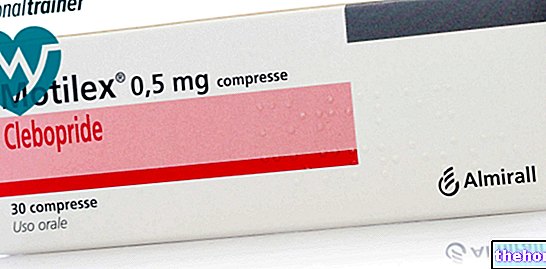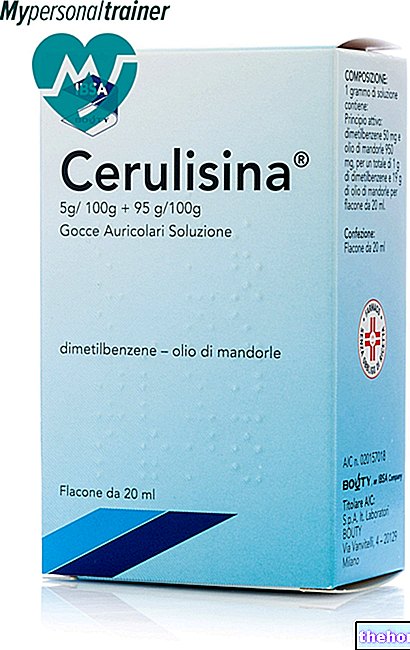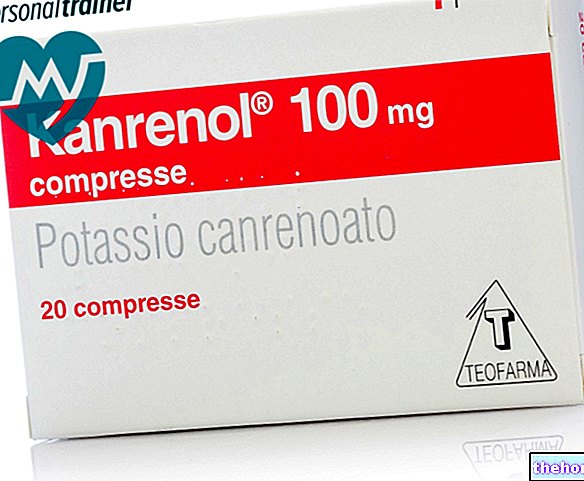Active ingredients: Iron
Niferex 100 mg hard gastro-resistant capsules
Why is Niferex used? What is it for?
Niferex is a form of iron that can be taken by mouth to treat or prevent iron deficiency. Iron is essential for the transport of oxygen and for the transfer of energy in the body. The capsules are called gastro-resistant because they do not release their contents into the stomach. They release iron in the intestine, where it can be absorbed.
Niferex is used for the treatment of iron deficiency.
Contraindications When Niferex should not be used
DO NOT take Niferex
- if you are allergic to the iron complex or to any of the other ingredients of this medicine
- if you have a narrowing of the esophagus
- if you have a condition called hereditary iron storage disease (hemochromatosis), chronic hemodialysis with signs of iron increases or different types of anemia
- if you regularly receive blood transfusions.
Children
- Children under 6 years of age (weighing less than 20 kg) should not take Niferex.
Precautions for use What you need to know before taking Niferex
Talk to your doctor or pharmacist before taking Niferex.
- Iron-based capsules can cause poisoning, particularly in children.
- Take special care if you already have a disease affecting your digestive system, such as stomach and intestinal ulcers, narrowing of the esophagus, inflammatory bowel disease or gastritis.
- In patients with chronic kidney disease requiring administration of erythropoietin, iron should be administered intravenously as iron taken orally is poorly absorbed in individuals with uremia.
- People, particularly the elderly, who have blood or iron loss of unknown origin should be carefully examined to determine the cause of the anemia / source of the bleeding.
- Your teeth may change color during Niferex therapy. (This discoloration may disappear when you stop taking Niferex. If this does not happen, you may need to remove it using abrasive toothpaste or by professional dental cleaning).
Interactions Which drugs or foods may change the effect of Niferex
Tell your doctor or pharmacist if you are taking or have recently taken any other medicines.
Increased undesirable effects
- Concomitant treatment with intravenous iron and oral iron can lead to hypotension (low blood pressure) or even collapse.
- Pain relievers (analgesics) and antirheumatics (e.g. salicylates and phenylbutazone): can aggravate any irritation of the inner lining of the stomach that may be caused by Niferex.
Decreased effects
- Certain antibiotics (tetracyclines) or medicines (bisphosphonates) used to treat weakened bones (osteoporosis): if you are also taking Niferex both the absorption of iron and the absorption of tetracyclines or bisphosphonates are reduced. This means that the effects of all these medicines will be reduced. Ask your doctor if you need to increase the doses of these medicines.
- Medicines containing calcium, magnesium or aluminum, eg antacids, calcium and magnesium based salt substitutes: these medicines reduce or prevent the absorption of the iron in Niferex. You may need to increase the amount of Niferex you take.
- Medicines for arthritis, such as penicillamine and oral gold salts, medicines for Parkinson's disease, such as L-methyldopa and levodopa and L-thyroxine, used to treat thyroid insufficiency: these medicines are less absorbed when if you are taking Niferex Ask your doctor if you need to increase the doses of these medicines.
- Medicines to treat infections (antibiotics) of the group known as fluoroquinolones, such as ciprofloxacin, levofloxacin, norfloxacin and ofloxacin: iron greatly reduces the amount of these medicines you absorb. Tell your doctor that you are taking Niferex before starting a course of these medicines.
The time interval between the administration of Niferex and that of any of the drugs listed above should be at least 2 hours.
The time between administration of Niferex and tetracyclines other than doxycycline (see below) should be at least three hours.
- You should not take doxycycline and Niferex together, as doxycycline may inhibit the absorption and circulation of Niferex.
Other possible side effects
- You may experience a dark discoloration of the stool which does not result from occult bleeding in your intestine.
- The most common tests for the detection of occult blood in the stool can give false positive results.
Niferex with food and drink
Niferex should not be taken with food. Substances contained in foods of plant origin (eg cereals and vegetables) can form complexes with iron (eg phytates, oxalates and phosphates). These complexes prevent it from absorbing iron. The ingredients in coffee, tea, milk, and cola-based beverages can also reduce the absorption of iron into the blood.
The time between taking these foods and Niferex should be at least two hours.
Warnings It is important to know that:
Pregnancy, breastfeeding and fertility
There are no known risks of using Niferex during pregnancy and breastfeeding.
If you are pregnant or breast-feeding, think you may be pregnant or are planning to have a baby, ask your doctor or pharmacist for advice before taking this medicine.
Driving and using machines
Niferex is not expected to affect your ability to drive or use machines.
Dosage and method of use How to use Niferex: Dosage
Always take this medicine exactly as your doctor or pharmacist has told you. If in doubt, consult your doctor or pharmacist.
Unless your doctor prescribes it otherwise, the usual dose is:
Adults and children from 6 years of age (minimum 20 kg body weight):
1 capsule per day
In cases of severe iron deficiency:
Adults and adolescents from 15 years of age or with a body weight of at least 50 kg: at the beginning of therapy, 1 capsule 2-3 times a day.
Do not take more than 5 mg of Niferex for each pound of your body weight. For example, if you weigh 50 kg, the maximum dose would be 5 x 50 = 250 mg (two and a half capsules).
Method of administration
Take the Niferex capsules with a sufficient amount of water. DO NOT chew the capsules. The capsules should be taken between meals (for example, on an empty stomach in the morning or between two main meals), as absorption can be reduced by the food ingredients.
Note
If you are unable or unwilling to swallow the capsules, you can empty the capsule and swallow the contents. To do this, carefully separate the two halves of the capsule on a small bowl. Gently shake the contents, scoop it up with a teaspoon and swallow it. You should drink some water after swallowing the contents of the capsule.
Duration of treatment
Your doctor will decide how long you need to continue taking Niferex.
Treatment will need to continue until you have normal levels of iron in your blood, this usually takes between 10 and 20 weeks or longer if you have persistent underlying conditions. The duration of treatment in the prevention of iron deficiency varies according to the situation (pregnancy, blood donation, chronic hemodialysis, planned autologous transfusion).
Overdose What to do if you have taken too much Niferex
Following an intentional or accidental overdose, the symptoms described in the "Possible side effects" section are more likely to occur and will be more severe.
If you have taken an overdose of Niferex you should inform your doctor immediately. Overdose can cause poisoning, especially in children.
Iron poisoning may present with symptoms such as restlessness, stomach pain, nausea, vomiting and diarrhea. Stool shows a tar-like coloration, vomit may contain blood. Symptoms may progress to shock, acidosis (excess acid in the body ) and coma Death can occur as a result of convulsions, Cheyne-Stokes breathing (abnormal breathing pattern characterized by alternating periods of shallow and deep breathing), coma and pulmonary edema.
If you forget to take Niferex
Do not take a double dose to make up for a forgotten dose. If you have forgotten one or several doses of Niferex, keep taking it for a little longer.
If you stop taking Niferex
You should not take special precautions before stopping treatment with Niferex. If you have any further questions on the use of Niferex, ask your doctor or pharmacist.
Side Effects What are the side effects of Niferex
Like all medicines, this medicine can cause side effects, although not everybody gets them.
Common side effects (affects 1 to 10 users in 100)
- stomach or bowel (abdomen) discomfort
- stomach ache
- He retched
- runny stools (diarrhea)
- nausea
- constipation
- dark colored stools
Rare side effects (affects 1 to 10 users in 10,000)
- tooth discoloration (see also "Warnings and precautions")
- skin hypersensitivity (e.g. rash)
- rash
- urticaria
Not known side effects (frequency cannot be estimated from the available data)
- Pain in the abdomen and pain in the upper abdomen
Reporting of side effects
If you get any side effects, talk to your doctor or pharmacist. This includes any possible side effects not listed in this leaflet. Side effects can also be reported directly via the national reporting system at https://www.aifa.gov.it/content/segnalazioni-reazioni-avverse. By reporting side effects you can help provide more information on safety of this medicine.
Expiry and Retention
Keep this medicine out of the sight and reach of children
Do not use this medicine after the expiry date which is stated on the outer carton and blister after EXP. The expiry date refers to the last day of that month.
Do not store above 25 ° C.
What Niferex contains
The active ingredient is the iron (II) -glycine-sulphate complex. One capsule contains:
567.7 mg of iron (II) -glycine-sulphate complex (equivalent to 100 mg of Fe2 +)
The other ingredients are:
Granules with the iron (II) -glycine-sulphate complex:
ascorbic acid, microcrystalline cellulose, hypromellose, hydroxypropyl cellulose, methacrylic acid-ethyl acrylate copolymer (1: 1) dispersion 30% (Eudragit L30 D-55) (contains methacrylic acid-ethyl acrylate copolymer (1: 1), sodium lauryl sulfate, polysorbate 80 ), acetyltriethyl citrate, talc
Capsule shell:
- body: gelatin, titanium dioxide (E171), red iron oxide (E172), yellow iron oxide (E172)
- head: gelatin, titanium dioxide (E171), red iron oxide (E172), black iron oxide (E172), sodium lauryl sulfate
What Niferex looks like and contents of the pack
Niferex is a hard gastro-resistant capsule with a chocolate brown cap and an orange body.
Contains gray-brownish granules.
Niferex is available in packs containing 30, 50, 90 and 500 x 1 gastro-resistant capsules.
Not all pack sizes may be marketed.
Source Package Leaflet: AIFA (Italian Medicines Agency). Content published in January 2016. The information present may not be up-to-date.
To have access to the most up-to-date version, it is advisable to access the AIFA (Italian Medicines Agency) website. Disclaimer and useful information.
01.0 NAME OF THE MEDICINAL PRODUCT
NIFEREX 100 MG HARD GASTRORESISTANT CAPSULES
02.0 QUALITATIVE AND QUANTITATIVE COMPOSITION
1 capsule contains:
Iron (II) glycine-sulfate complex 567.7 mg (equivalent to 100 mg of Fe2 +)
For the full list of excipients, see section 6.1
03.0 PHARMACEUTICAL FORM
Hard gastro-resistant capsule
Capsule head: chocolate brown.
Capsule body: orange.
Capsule contents: gray-brownish granules.
04.0 CLINICAL INFORMATION
04.1 Therapeutic indications
Iron deficiency.
Niferex is indicated in adults and children from six years of age (minimum body weight of 20 kg).
04.2 Posology and method of administration
Dosage
For all ages, body weights and dosages, the posology should be adjusted according to the patient's needs and the response to clinical variables (e.g. hemoglobin, ferritin and transferrin) should be monitored.
A daily dose of 5 mg Fe2 + / kg body weight should not be exceeded (see section 4.9).
Adults
One capsule per day.
In case of marked iron deficiency, adults with a body weight of at least 50 kg may be given a dose of 2 to 3 times higher at the start of treatment.
Elderly patients
No clinical data are available on the need for dosage adjustment in elderly patients.
Patients with impaired renal or hepatic function
No clinical data are available on the need for dosage adjustment in patients with impaired renal or hepatic function.
Pediatric population
Niferex is contraindicated in children less than 6 years of age (see section 4.3).
Children from 6 years of age (minimum body weight of 20 kg) can be given 1 capsule per day.
In case of marked iron deficiency, adolescents with a body weight of at least 50 kg may be given a dose of two to three times higher at the start of treatment.
Method of administration
The capsules should be swallowed, without being chewed, with a sufficient amount of water. The capsules should be taken between meals (for example, on an empty stomach in the morning or between two main meals), because absorption can be reduced by food ingredients. The duration of therapy is determined in accordance with the laboratory results obtained. in follow-up exams.
If swallowing of the capsules is difficult or unwanted, the contents of the capsule can also be taken without the capsules of the capsule. Therefore the patient should carefully open the capsule and collect the contents in a spoon. After taking the granules from the spoon, the patient should drink a sufficient amount of water.
The treatment must continue until the normalization of the values is obtained. The treatment can be prolonged for the time necessary to restore the body's iron reserves.
The duration of treatment varies according to the severity of the deficiency, but usually 10 to 20 weeks of treatment or longer is required for persistent underlying conditions. The duration of treatment in the prevention of iron deficiency varies according to the situation (pregnancy, blood donation, chronic hemodialysis and planned autologous transfusion).
04.3 Contraindications
• Esophageal stricture.
• Hypersensitivity to the active substance or to any of the excipients listed in section 6.1.
• Repeated blood transfusions.
• Hemochromatosis, chronic hemodialysis with signs of iron accumulation, sideroblastic anemia, lead anemia, thalassemia, and forms of anemia secondary to other hemoglobinopathies.
• Children under 6 years of age should not take Niferex due to the high dosage.
04.4 Special warnings and appropriate precautions for use
• Caution should be exercised in patients with existing gastrointestinal pathologies such as inflammatory bowel disease, intestinal stenosis, diverticula, gastritis, gastric and intestinal ulcers.
• In patients with chronic kidney disease requiring erythropoietin administration, iron should be administered intravenously as oral iron is poorly absorbed in individuals with uremia.
• People, particularly the elderly, who have blood or iron loss of unknown origin should be carefully examined to determine the cause of the anemia / source of the bleeding.
• Iron-containing preparations can cause poisoning especially among children.
• Teeth discoloration may occur during iron (II) glycine sulfate complex therapy. According to the scientific literature, such discoloration of the teeth can spontaneously regress following discontinuation of the drug, or must be removed with the use of an abrasive toothpaste or by professional dental cleaning.
04.5 Interactions with other medicinal products and other forms of interaction
The following associations should be avoided:
Intravenous administration of iron salts
Intravenous administration of iron salts in a patient already receiving oral iron can induce hypotension and even collapse due to the rapid iron release due to transferrin saturation. This combination is not recommended.
Doxycycline:
Orally administered iron salts inhibit the absorption and enterohepatic circulation of doxycycline. This combination should be avoided.
The following combinations may require dose adjustment:
Iron, through chelation, inhibits the absorption of many medicines. The interval between administration of Niferex and the medicines listed below should therefore be as long as possible.
Fluoroquinolones:
When iron salts are administered concomitantly with fluoroquinolones, the absorption of the latter is significantly impaired. The absorption of norfloxacin, levofloxacin, ciprofloxacin, gatifloxacin and ofloxacin is inhibited by 30-90% by iron. Fluoroquinolones should be administered at least 2 hours before or at least 4 hours after Niferex.
Methyldopa (L- form):
When ferrous sulfate was administered concurrently with either 1 hour or 2 hours prior to methyldopa, the bioavailability of methyldopa was reduced by 83%, 55% and 42% respectively. The interval between the administration of these compounds should be as much as possible. as long as possible.
Thyroid hormones:
When administered simultaneously, the absorption of thyroxine is inhibited by iron and this may affect the outcome of the treatment. The interval between administrations of these compounds should be at least 2 hours.
Tetracyclines:
When administered simultaneously orally, iron salts inhibit the absorption of tetracyclines. The interval between administration of Niferex and tetracyclines, other than doxycycline, (see above) should be at least 3 hours.
Penicillamine:
Penicillamine absorption is reduced, as it may form chelates with iron. Penicillamine should be administered at least 2 hours before Niferex.
Bisphosphonates:
Medicinal products containing iron form complexes with i In vitro bisphosphonates. When iron salts are administered simultaneously withBisphosphonates, the absorption of Bisfosfonati may be compromised. The time interval between the administration of these medicinal products should be at least 2 hours.
Levodopa:
Simultaneous administration of ferrous sulphate and levodopa to healthy volunteers reduces the bioavailability of levodopa by 50%. The bioavailability of carbidopa is also reduced (75%). The interval between the administration of these compounds should be as long as possible.
Non-steroidal anti-inflammatory drugs:
The simultaneous administration of iron salts and non-steroidal anti-inflammatory drugs can increase the irritating effect on the gastrointestinal mucosa.
Antacids:
Antacids containing oxides, hydroxides or salts of magnesium, aluminum and calcium chelate the iron salts. The interval between the administration of these two groups of compounds must therefore be as long as possible; the minimum time is two hours between the administration of the antacid and the iron.
Football:
Concomitant use of iron and calcium decreases iron absorption. Niferex should be taken away from calcium-containing foods and drinks.
The bioavailability of Niferex can be reduced by iron complexing agents (such as phosphates, phytates and oxalates) contained in plant foods and in the components of milk, coffee and tea. The time interval between the administration of these compounds should be at least 2 hours.
The administration of the iron (II) glycine-sulphate complex may result in a false positive in the test to look for occult blood in the faeces.
Others:
When iron is administered orally, dark discolouration of the stools not resulting from occult gastrointestinal bleeding may occur. The guaiac test can give false positive results.
04.6 Pregnancy and lactation
No known risks.
04.7 Effects on ability to drive and use machines
Niferex has no or negligible influence on the ability to drive and use machines.
04.8 Undesirable effects
The frequency of undesirable effects is defined as: very common (≥1 / 10), common (≥1 / 100,
During the administration of iron (II) glycine sulfate the following side effects were noted:
Gastrointestinal disorders
common: abdominal discomfort, heartburn, vomiting, diarrhea, nausea, constipation and dark colored stools.
Rare: discolouration of the teeth (see also section 4.4 "Special warnings and precautions for use").
Not known: abdominal pain and upper abdominal pain
Skin and subcutaneous tissue disorders:
Rare: skin hypersensitivity reactions, eg rash, rash and urticaria
Disorders of the immune system:
Not known: anaphylactic reaction
Reporting of suspected adverse reactions.
Reporting of suspected adverse reactions occurring after authorization of the medicinal product is important as it allows continuous monitoring of the benefit / risk balance of the medicinal product. Healthcare professionals are asked to report any suspected adverse reactions via the national reporting system. "address https://www.aifa.gov.it/content/segnalazioni-reazioni-avverse.
04.9 Overdose
Symptoms of intoxication may occur after administration of doses of 20 mg Fe2 + / kg body weight or greater. The onset of severe toxic effects should be expected for dosages starting from 60 mg Fe2 + / kg body weight or greater. Intoxications caused by doses of 200 to 400 mg Fe2 + / kg of body weight can cause death if not properly treated.
Pediatric population
In infants, the administration of a total dose of as little as 400 mg Fe2 + can lead to a life-threatening condition.
Iron poisoning can have several stages. During the first stage, 30 minutes to 5 hours after oral administration, symptoms such as restlessness, stomach pain, nausea, vomiting and diarrhea are observed. Stool shows a tar-like coloration , the vomit may contain blood. Symptoms may progress to shock, metabolic changes such as excess acid in the body and coma. This is frequently followed by an apparent healing phase which can last up to 24 hours. Subsequently diarrhea, shock and acidosis recur. Death can occur as a result of convulsions, Cheyne-Stokes breathing, coma, and pulmonary edema.
Therapeutic measures for overdose:
Gastric lavage or induction of vomiting may be considered soon after overdose. Deferoxamine (Desferal) is a specific antidote.
For more detailed information, please refer to the manufacturer's information.
05.0 PHARMACOLOGICAL PROPERTIES
05.1 Pharmacodynamic properties
Pharmacotherapeutic group: anti-anemic.
ATC code: B03AA01
Iron is essential for the transport of oxygen (eg hemoglobin) and for the transfer of energy in the organism. The body content of iron is about 50 mg of Fe2 + per kg of body weight in men and about 38 mg of Fe2 + per kg of body weight in women.
Mechanism of action
Iron in the ferrous form (Fe2 +) is the bioavailable form that can enter the metabolism of cells together with the already existing heme iron. Complex mainly with amino acids, iron is transported into the epithelial cells of the mucosa of the small intestine, mainly in the duodenum and to a lesser extent in the proximal jejunum. Here a large amount of non-heme iron taken with food is reduced to the ferrous form (Fe2 +). The iron deriving from Niferex is already in the reduced ferrous form (Fe2 +) and therefore readily bioavailable for absorption in the metabolism of cells.
Pharmacodynamic effects
Iron is needed by the body to build hemoglobin, myoglobin and iron-containing enzymes. Iron deficiency can be triggered by an increased demand for iron (for example during growth and pregnancy), by a "high iron loss (eg. eg from bleeding) or from a decrease in iron intake (eg from an insufficient amount of iron in food).
An iron deficiency anemia can arise as a result of an iron deficiency.
Niferex is a medicine produced for the treatment of iron deficiency. Contains iron (Fe2 +) in a form that is easily absorbed and usable by the body. The product is therefore suitable for eliminating the symptoms caused by an iron deficiency. Like all iron preparations, Niferex has no effect on erythropoiesis or anemia not caused by an iron deficiency.
Pediatric population
Refer to section 4.2 for information on pediatric use.
05.2 Pharmacokinetic properties
Absorption
Niferex hard capsules contain gastro-resistant granules. The capsule shell dissolves in the stomach and the acid-resistant granules subsequently reach the duodenum in small quantities, where they dissolve and release the iron complex.
Bioavailability
In patients with depleted iron reserves, the relative bioavailability is 95% compared to an aqueous solution of iron sulphate taken as a reference. This is equivalent to an absorption of the Fe2 + ion of approximately 15%.
Distribution
In the blood, iron ions are bound to transferrin and transported to the sites where they are needed. Iron is stored as ferritin in the liver, spleen and bone marrow.
Elimination
Only a small portion of iron (1-2 mg per day) released from the breakdown of hemoglobin (20-30 mg per day) is excreted in the faeces. Most of it is reused by the body, mainly for the synthesis of hemoglobin.
05.3 Preclinical safety data
There are no preclinical data of relevance to the physician which can be added to those already included in other sections of the Summary of Product Characteristics.
06.0 PHARMACEUTICAL INFORMATION
06.1 Excipients
Ascorbic acid, microcrystalline cellulose, hypromellose, hydroxypropyl cellulose, methacrylic acid-ethyl acrylate copolymer (1: 1) dispersion 30% (Eudragit L30 D-55) (contains methacrylic acid-ethyl acrylate copolymer (1: 1), sodium lauryl sulfate, polysorbate 80), acetyltriethyl citrate, talc, purified water.
Capsule shell:
- body: gelatin, titanium dioxide (E171), red iron oxide (E172), yellow iron oxide (E172)
- head: gelatin, titanium dioxide (E171), red iron oxide (E172), black iron oxide (E172), sodium lauryl sulfate
06.2 Incompatibility
Not relevant
06.3 Period of validity
5 years
06.4 Special precautions for storage
Do not store above 25 ° C.
06.5 Nature of the immediate packaging and contents of the package
Blister formed by a paper / aluminum film with opaque white polypropylene (PP) sheet, containing 30, 50, 90 and 500x1 gastro-resistant capsules.
Not all pack sizes may be marketed.
06.6 Instructions for use and handling
No special instructions.
07.0 MARKETING AUTHORIZATION HOLDER
UCB Pharma S.p.A. - Via Varesina, 162 - 20156 Milan - Italy
08.0 MARKETING AUTHORIZATION NUMBER
"100mg gastro-resistant hard capsules" 50 capsules in blister PP / AL / AIC paper: 036743019
09.0 DATE OF FIRST AUTHORIZATION OR RENEWAL OF THE AUTHORIZATION
18/09/2006 - 27/08/2009
10.0 DATE OF REVISION OF THE TEXT
14/10/2015




























